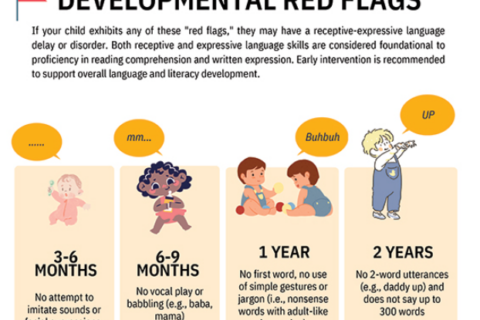5 Fun Speech Therapy Games & Activities For Toddlers

Speech and language development during the toddler years plays a vital role in building strong communication skills for the future. When toddlers face speech delays or challenges, weaving simple, language rich activities into everyday routines can make a big difference—while still keeping things fun and playful.
Below are five evidence-based speech therapy-approved activities created specifically for toddlers. These playful games not only boost language development, but also create meaningful opportunities for connection between parents and their children.
1. Animal Sound Safari
Creating playful scenarios with animal sounds encourages vocalizations and sound imitation which are important pre-verbal skills while introducing basic sound patterns that form the building blocks of speech.
How to play:
- Gather animal figurines or picture cards of familiar animals.
- Place the animals in a container or hide them behind your back.
- Begin singing the familiar tune:
“Row, row, row your boat, gently down the stream…” - Then sing a new ending:
“If you see a…” — pull out an animal (e.g., a lion) and sing:
“…lion there, don’t forget to ROAR!” - Continue the game, pulling out one animal at a time and encouraging your child to imitate each sound with you.
- Use slow, exaggerated speech, and hold the toy close to your mouth as you model the animal sound to draw attention to how the sound is made.
This activity uses engaging music and actions to target sound imitation which is an important skill in pre-language development. Children first learn to imitate sounds before they imitate words and phrases. Holding the toys next to your mouth while you imitate the sound in a slow and exaggerated manner brings attention to your mouth—all of which are key modeling strategies.
2. Bubbles with Purpose
Bubbles offer more than just visual delight—they provide excellent opportunities for practicing specific sounds, words, and expanding speech.
How to play:
- Blow bubbles and say “Pop!” in an enthusiastic and exaggerated manner while popping a bubble
- Encourage your child to exclaim, “pop!” with you as they pop bubbles
- Expand their verbal productions by prompting them to make requests. Try asking: “Want more bubbles? Say ‘more!’” or “more bubbles!”
- Acknowledge request attempt and repeat vocabulary for additional exposure “OK! You want more bubbles!”
- Practice words containing target sounds like “b” (“big bubble,” “blue bubble”)
- Count bubbles together
- Use directional words as you chase bubbles (“up,” “down,” “high,” “low”)
This game combines repetition, sound imitation, and communication temptations in a fun sensory activity. The joy of popping bubbles motivates children to imitate words and interact verbally, which strengthens language foundations.
3. Sensory Bin Treasure Hunt
Sensory exploration combined with language development creates a multi-sensory learning experience that increases engagement and enhances neural connections supporting language development.
How to play:
- Fill a container with rice, beans, or sand for tactile exploration.
- Hide small toys or objects that represent target vocabulary (e.g., ball, spoon, car, animal).
- As your child uncovers each item, name it clearly, slowly, and multiple times:
- “A ball! It’s a ball! You found a ball! ”
- Encourage imitation and interaction:
- “What did you find?”
- Expand language by adding simple descriptive words:
- “Red ball”
- “Soft bear”
- Repeat often to reinforce vocabulary through hands-on, meaningful experiences.
Multisensory play—combining touch, sight, and sound—activates multiple areas of the brain, strengthening neural pathways that support attention, memory, and language. As children explore sensory materials and hear consistent, meaningful language paired with their actions, they are more likely to understand, retain, and eventually use new words.
4. Ready… Set… Go!” Routine Play
Predictable language routines are important language building tools. A language routine is a predictable and repeated phrase or set of words used consistently during familiar activities. The repeated use of the phrase and predictability of the language context helps children anticipate language, giving them the structure they need to participate more easily and build understanding and vocabulary over time. This builds confidence and encourages verbal expression through repetition and familiarity.
How to play:
Use the phrase “Ready… Set… Go!” consistently before an exciting action (e.g., pushing a swing).
Begin by modeling the full phrase several times:
- “Ready… Set… Go!” → then push the swing.
Once familiar, pause before the final word to encourage participation:
- Say, “Ready… Set…” then pause and look at your child expectantly.
- Wait for them to attempt or say “Go!”
This routine works well with many activities:
- Swinging
- Spinning in a chair
- Pushing toy cars
- Going down a slide
- Repeat daily to help your child learn and anticipate the words.
- Use slow, exaggerated speech and clear facial expressions.
- Hold your face near your child’s eye level so they can see your mouth movements clearly.
5. Picture Book Conversations
Interactive reading provides a structured yet natural environment for language modeling and practice.
How to play:
Step 1: Choose the Right Book
Look for books that support early communication by including:
- Repetition – Repeated words and phrases help your child learn through familiarity.
- Rhyming – Rhyme builds listening and sound awareness, which are early literacy skills.
- Routines – Books about daily activities (like mealtime, bath, or bedtime) give your child meaningful words to use during real-life routines.
- Participation – Choose books with flaps, textures, or buttons to keep little hands engaged and build interest.
Step 2. Model, Model, Model!
- Read slowly and clearly. Use exaggerated facial expressions and emphasize key words to draw their intention to key vocabulary.
- Point to pictures and name what you see:
- “Look! A dog! A big dog!”
- For animal or environmental sounds, imitate the sounds they make:
- “A dog! Woof Woof!”
Step 3. Invite Participation
- Pause before a predictable word and look at your child expectantly:
- “Brown bear, brown bear, what do you… (pause)”
- Ask simple, engaging questions like:
- “What’s that?”
- “Where’s the puppy?”
- Let your child lift flaps, turn pages, or press buttons—this keeps them involved and builds their attention and interest.
Step 4. Repeat Often
- Repetition is key! Toddlers learn best when they hear and see the same language again and again.
- Read favourite books multiple times—over days or even weeks.
- With each re-reading, your child will begin to anticipate, imitate, and participate more and more.
What’s important to consider across all of these activities is that the goal isn’t perfect speech—it’s interaction, imitation, and connection. Celebrate your child’s attempts with smiles, encouragement, and praise, even if the words aren’t quite right yet.
Reading and playing together is more than just a quiet activity—it’s a playful, joyful opportunity to build vocabulary, early conversation skills, and a lifelong love of books.
Making Therapy Part of Daily Life
The most effective speech therapy for toddlers doesn’t feel like “therapy” at all. Integrating these activities into daily routines creates natural learning opportunities without pressure or frustration. Consistency is key—children need consistent, repeated exposure to language before they comprehend and use words.
Remember that progress may be gradual. Celebrate small victories and maintain a positive, encouraging environment. Research consistently shows that children learn language best when interactions are joyful and stress-free.
When to Seek Professional Guidance
While home-based activities are valuable, they should complement rather than replace professional speech therapy when needed. Consider consulting with a speech-language pathologist if your toddler:
- Has significantly fewer words than peers of similar age
- Is difficult to understand, even by familiar caregivers
- Shows frustration when attempting to communicate
- Appears to have lost previously acquired speech skills
Early intervention can substantially improve outcomes for children with speech and language delays, with benefits extending far beyond communication into social development and academic readiness.
By incorporating these playful activities into your daily interactions, you’re building essential communication skills while creating meaningful connections with your child. The foundation you establish now through patient, consistent practice will support your toddler’s communication journey for years to come.
Get in Touch With Open Lines®














